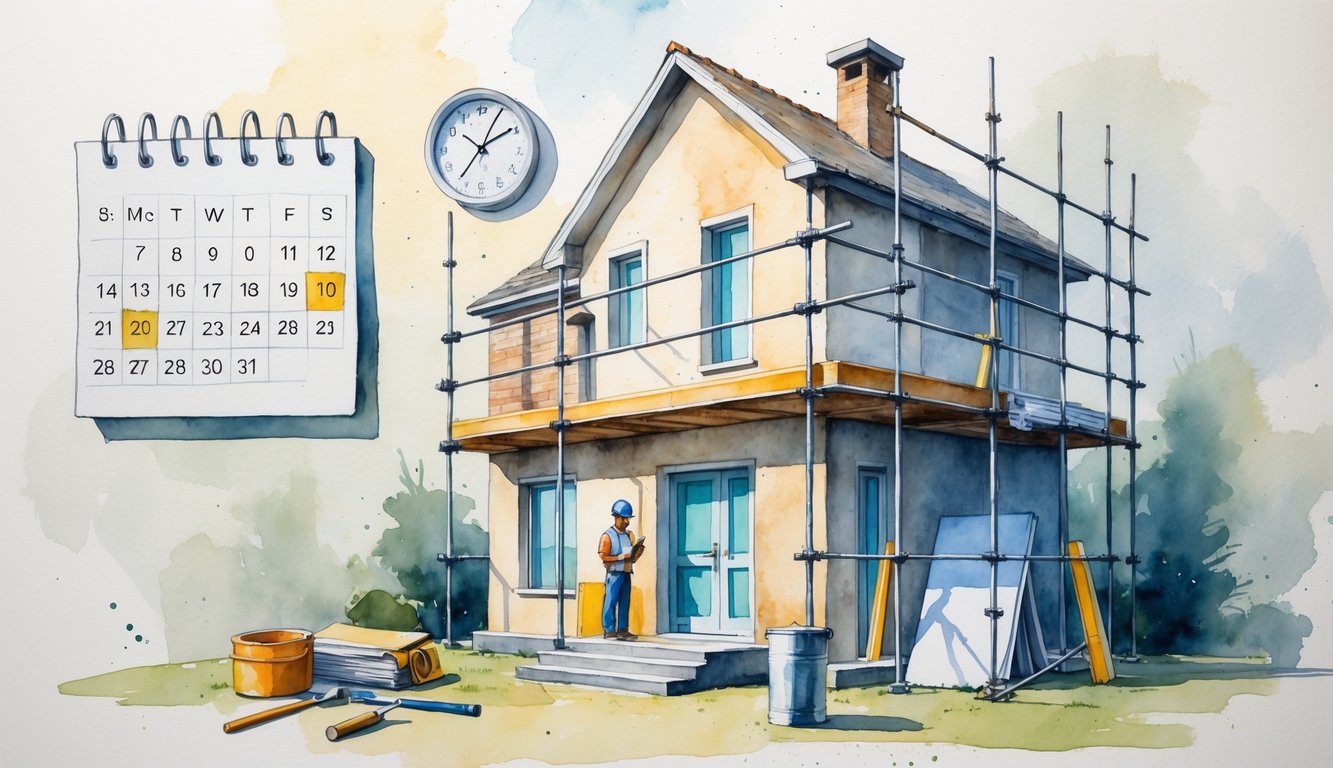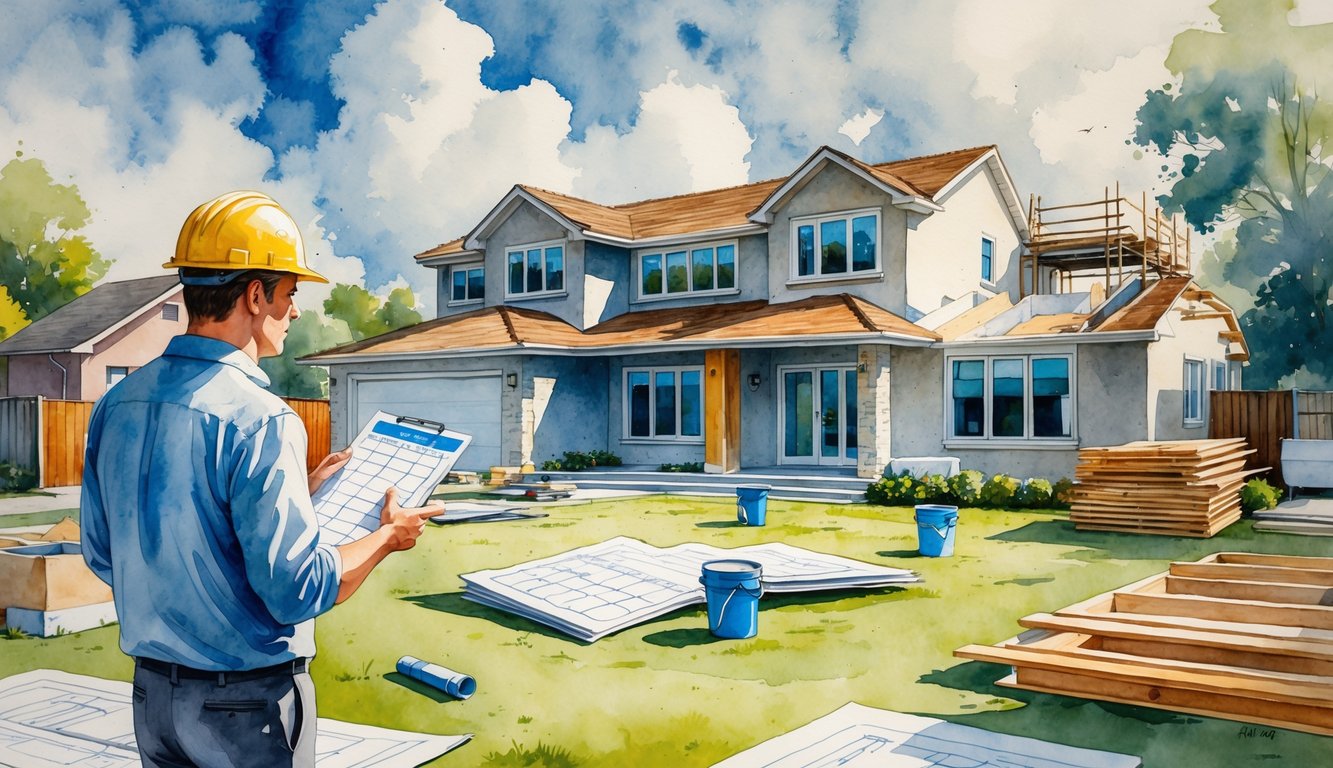
Material Shortages and Supply Chain Issues
Who decided plywood was the new gold? Tried ordering for a basic desk, ended up waiting three months. Projects stall, prices bounce around, crews get antsy or vanish. It’s just a mess.
Material Shortages Hindering Progress
Call the lumberyard. “Out of stock,” they say, like that’s supposed to help me. Needed 5/8″ drywall last winter—nothing fancy—ended up driving 50 miles for a handful of sheets. It’s not just wood. Fixtures, HVAC, windows, all the engineered stuff—poof, gone from regular suppliers.
Buildertrend claims material lead times doubled since before the pandemic (2024), but I swear it feels like triple if it’s a Monday. Even if you get a partial shipment, something’s always missing—a faucet stuck at customs, plumber bails, now you’re rescheduling everyone because of one missing part.
Substituting materials used to be a quick fix, but now? It’s endless calls to architects, begging building inspectors for mercy. Sometimes they just say no—“no exceptions, sorry.” Last job, we waited six weeks for a specific fire-rated insulation because nothing else got the green light. Meanwhile, my cousin in Ohio gets a pallet in a week. Go figure.
What To Expect With Long Lead Times
Lead times? Joke’s on us. Lighting that used to be next-day is now 12–16 weeks, especially if it’s custom or imported. Kitchen cabinets—don’t even start. Local shops blame tariffs, labor, the weather, maybe the phases of the moon, but it doesn’t help when clients want answers. I’ve got open shelves instead of cabinets just to keep things moving.
Best advice I can give: order everything before you even swing a hammer. Sounds nuts, but delays stack up—windows late? That delays trim, HVAC, inspections, the works. NAHB says unpredictable supply chains add up to 15% to project costs. That’s not spare change. Still, there’s always that hope—maybe something shows up early, or you snag someone’s canceled tile order.
But honestly, it’s a mess when your schedule says “paint” but the primer’s still in Missouri. Try telling a client they’ll be showering at the gym for another three weeks. If anyone out there figures out how to guarantee material delivery, seriously, I’ll buy you coffee and throw in the first box of brass pulls that finally arrives.
Homeowner Challenges in the Approval Process

Trying to get clarity from council? Good luck. Meanwhile, everyone at home is losing their minds. My phone’s blowing up with planning app alerts, emails pile up, breakfast barely gets made, and I’m juggling paperwork like it’s a hobby.
Decision Fatigue and Expectations
Anyone who thinks there’s a simple checklist is dreaming. By week three, picking window sizes or figuring out energy compliance feels like a weird multiple-choice test with no right answers. UK authorities only made 64% of non-major decisions on time last year (official stats, not that it helps). Try justifying that at dinner.
And because I’m always scribbling notes, I see clients freak out every time the project manager brings another change—another document, another clause. No one warns you about the slow drip of uncertainty from each council update. Mark, my old coworker, swears councils do it on purpose, but honestly, they’re just swamped. It’s like ordering groceries with special requests and getting none of the swaps you actually wanted.
Avoiding DIY Errors That Slow Down Approvals
Don’t make me talk about the “drawings” people scan from graph paper. Last month, a guy labeled his wall “maybe load-bearing?”—I had to call my engineer friend just to check we weren’t about to drop a wardrobe on someone. Want delays? Submit sloppy plans or guess at fire safety. Local authorities love that.
I’ve seen people use cheap apps, mix up metric and imperial on the same page, and then act shocked when planners bounce it back. DIY projects hit a wall—sometimes literally—when folks skip building code details. One wrong structural note and your neighbor’s got ammo to object for eternity. With applications soaring since the pandemic, even pros are begging for clear, accurate plans. If you’re gonna splurge anywhere, make it professional design. Otherwise, you’re just seasoning soup by memory—tastes fine, but if the inspector says it’s unsafe, you’re starting over.
Managing Pre-Existing Conditions and Surprises
Pre-existing conditions—never-ending headache. Especially in additions and basements. Somehow, the stuff you need to know never shows up in the appraisal photos. Most of these timeline disasters could’ve been dodged if someone (me too, probably) had pushed for a real inspection before sketching anything.
Unexpected Issues in Home Additions
With additions, you open a wall and suddenly it’s 1970s wiring, no permit, and a mystery cable vanishing into the insulation. NAHB says over 33% of remodels hit code issues during demo. No one budgets for chasing ten feet of crushed drainpipe, but guess what, the inspector stops the job anyway.
“Pre-existing condition” turns every insurance call into a philosophical debate, and the answer’s always “not covered.” Home warranties? Maybe, if you’re lucky. If your addition touches anything flagged on an old inspection, forget it. Watched a colleague lose three weeks just arguing about ductwork. And asbestos? Don’t get me started.
Trying to schedule around this circus? Not happening. Subs and suppliers get thrown off when the city inspector finds a mystery leak and halts everything. HVAC, trim, electrical sign-offs—it’s all dominoes, and the first one’s always something you didn’t see coming.
Addressing Remodeling Delays Caused By Basement Renovations
Basements are their own beast. Had a job that looked easy, but the slab was off and then a damp spot showed up behind an ancient freezer. Remodeling Magazine says basements average 18% more hidden issues than above-ground jobs. One plumber I know won’t touch basements unless there’s a drone scan—seriously.
Half the time, inspectors pause permits for “evidence of moisture,” which is code for “fix it before I come back.” But half the moisture’s from ancient waterproofing that’s failed for decades. Foundation cracks sometimes get “grandfathered” if you can prove it, but who has drawings from 1958 that actually match reality?
I started dragging clients through a checklist of weird pre-existing conditions before even talking budget. Here’s the secret: most delays are two jobs in one—the part you planned, and the mess you inherited. Sometimes you’re just waiting for a sub to re-pour a floor that should’ve been fine, blaming slow-drying sealant when it’s really the missing vapor barrier. The only way to make sense of it is to accept that nothing’s linear, and no one ever checks under the oil tank until it’s too late.